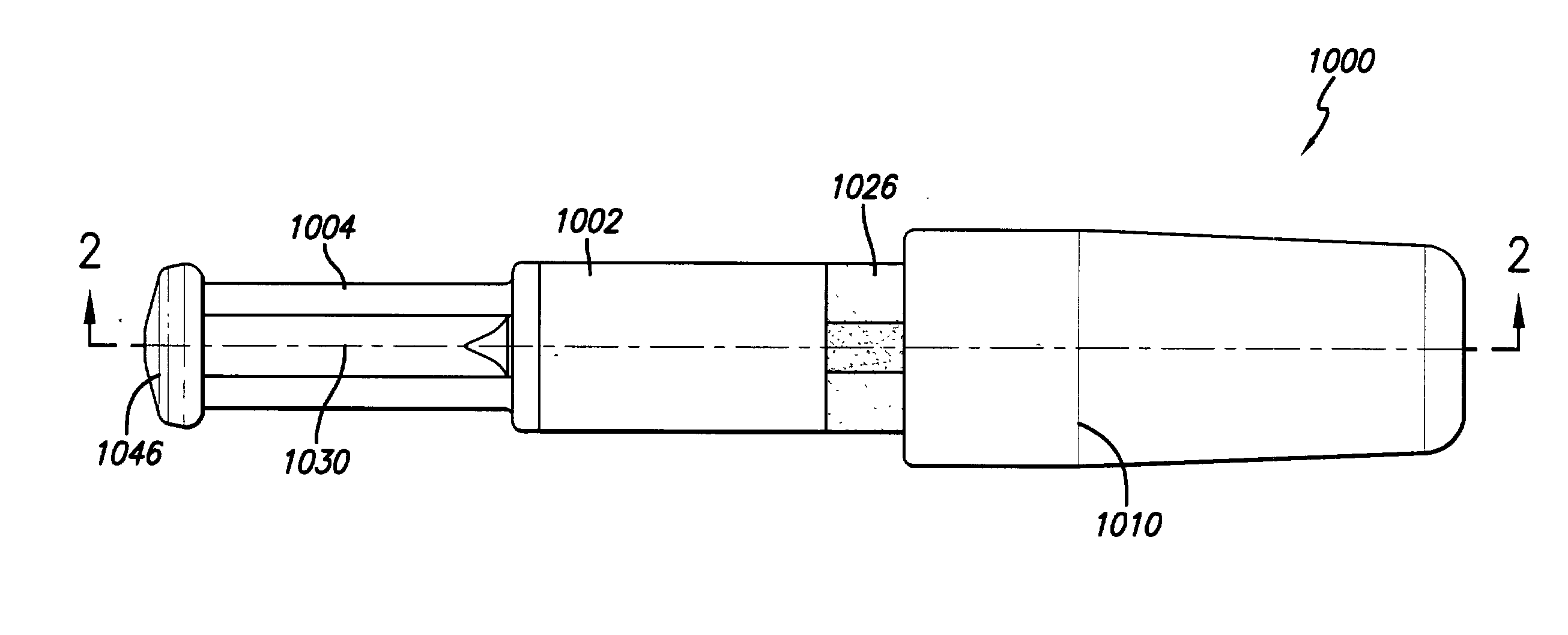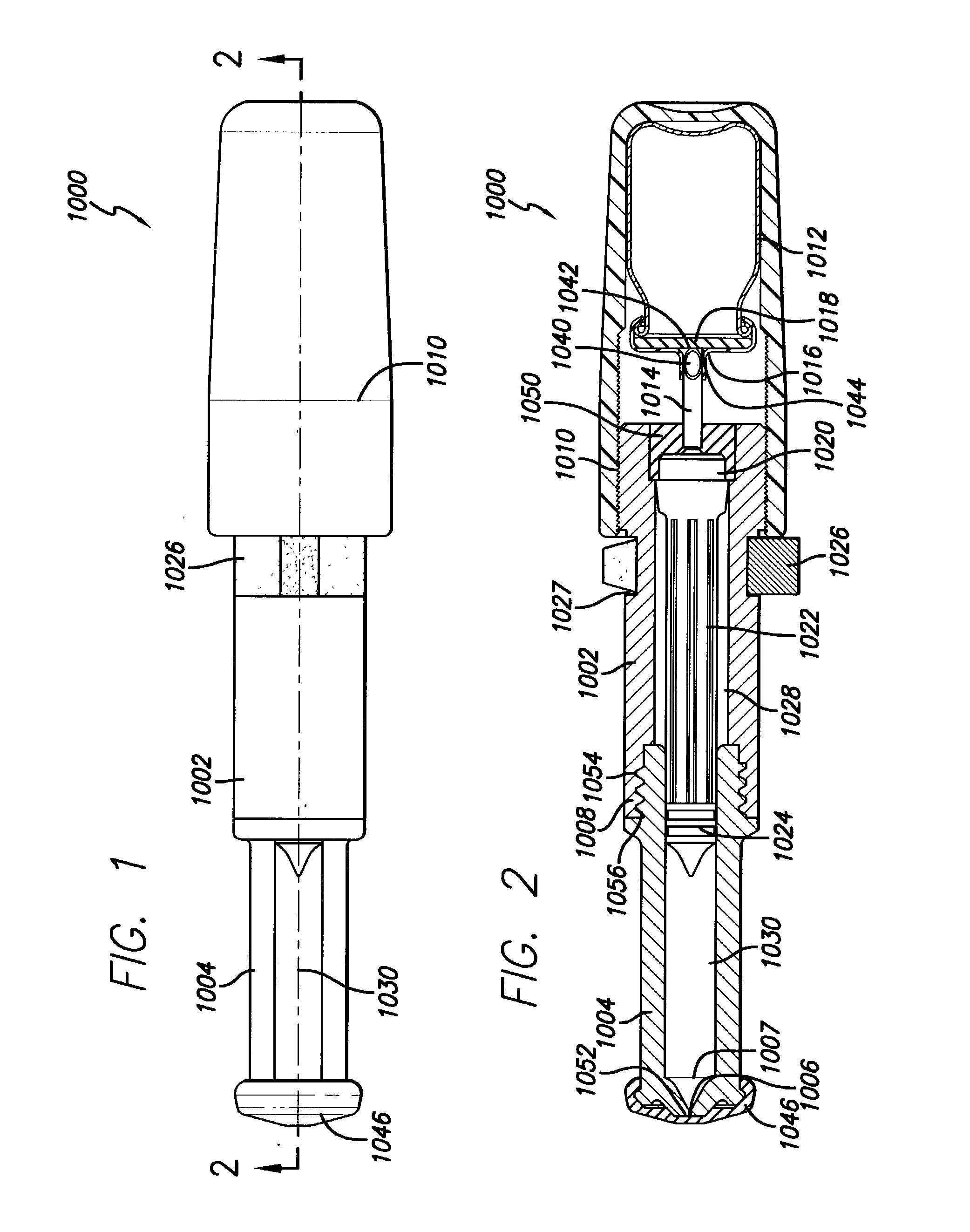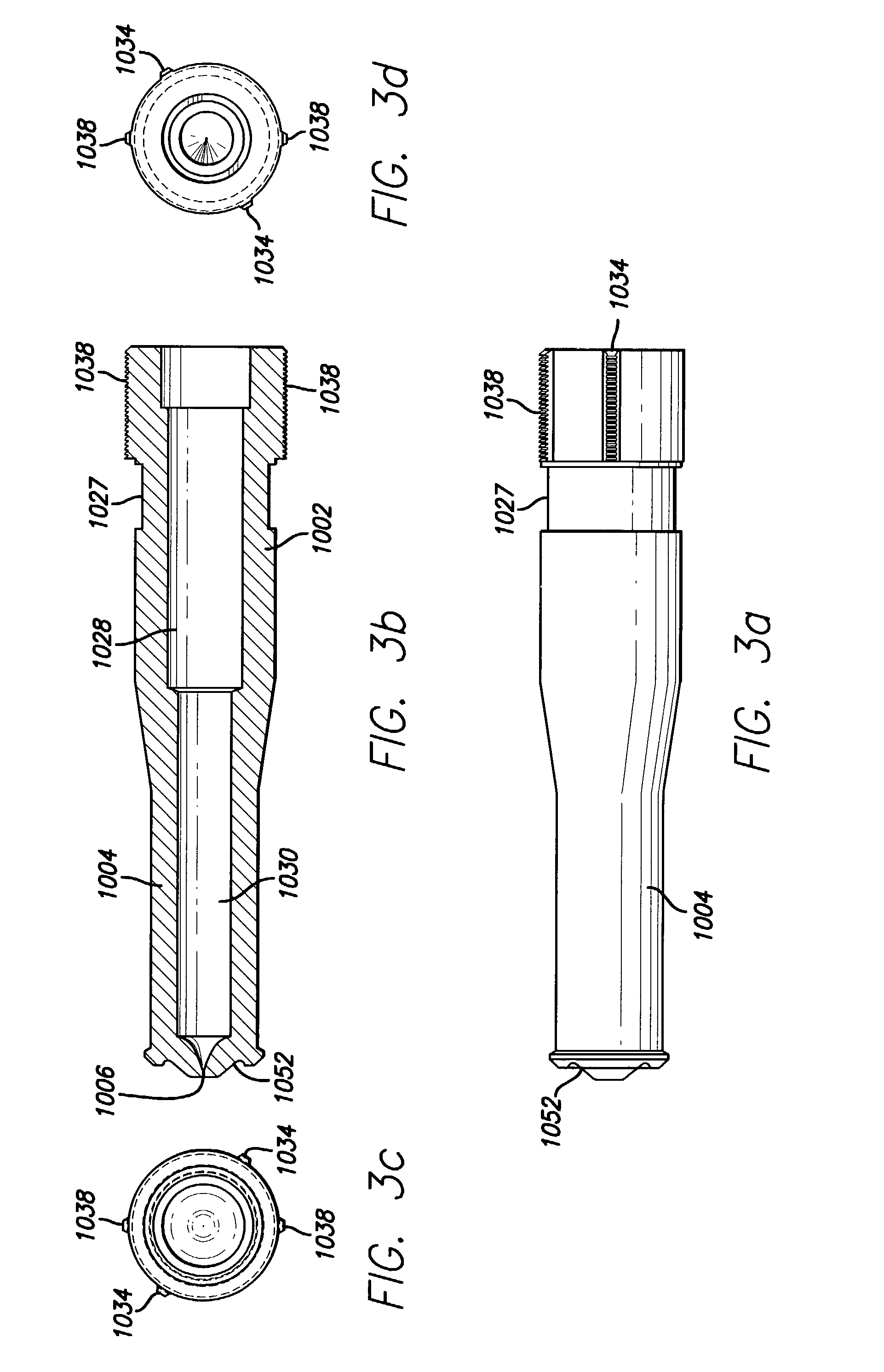Method and apparatus for needle-less injection with a degassed fluid
- Summary
- Abstract
- Description
- Claims
- Application Information
AI Technical Summary
Benefits of technology
Problems solved by technology
Method used
Image
Examples
example 1
[0031] Gas-Powered Needle-Less Injector
[0032] As depicted in FIG. 1, the needle-less injector 1000 may be used as a single dose disposable injector to deliver a dosage of degassed fluid. Precise delivery may be achieved through an orifice with a diameter of approximately 0.0032" (approximately 0.08 mm). However, larger or smaller diameters, ranging from 0.05 mm to 1.5 mm, may be used, as long as accurate penetration of the skin and delivery of the degassed fluid can be maintained. The degassed fluid is linearly accelerated via pneumatic propulsion. Safety is maintained and inadvertent activation of the needle-less injector 1000 is avoided via a pressure (e.g., resistance) sensitive triggering feature which allows for proper tensioning of the nozzle and orifice at the injection site prior to automatic medication deployment. For example, activation of the needle-less injector 1000 will not occur until the injector is properly positioned to provide the required resistance from the skin...
example 2
[0040] Needle-Less Injector Including a Latch
[0041] As depicted in FIG. 10, a needle-less injector comprises a tubular body 2001, which retains a cartridge 2003 pre-filled with a degassed fluid, and visible through one or more windows 2004 in the body 2001. The body 2001 has an aperture in the end to permit a nozzle 2005 to protrude. A finger nut 2006 is used by the operator to control the dose volume, and has markings 2007 thereon to indicate its position relative to a scale 2008 on sliding sleeve 2002, which is arranged co-axially on the body 2001.
[0042] In FIG. 11, the cartridge 2003 is shown filled with degassed fluid 2009, and fitted with a nozzle 2005 having an orifice 2010, and a free piston 2032. The nozzle 2005 may be a separate component as shown, sealingly fixed into the cartridge 2003, or may be formed integrally with the cartridge 2003. Preferably the cartridge 2003 is made of a transparent material compatible with the degassed fluid 2009, to enable the contents to be v...
example 3
[0052] Single-Use Needle-Less Injector Including a Latch and Two-Component Injectate
[0053] The embodiment shown in FIGS. 18a and 18b is a single use disposable needle-less injector. Referring to FIG. 18a, cartridge 2003 containing degassed fluid 2009 and free piston 2032 is firmly located in the injector casing 2044 and retained by one or more resilient lugs 2045, so that there is no longitudinal free play. A ram 2046 is located concentrically with the cartridge and such that there is an impact gap A.sub.1 between the adjacent faces of the piston 2032 and ram 2046. Ram 2046 is urged towards piston 2032 by spring 2024, but is prevented from moving by latch 2026 supported on flange 2018 and engaged with notch 2047 in the stem of the ram 2046. Latch 2026 is made from a resilient material, and is configured to apply a bias in the direction of arrow X. A sliding sleeve 2002 is located over the casing 2044, with cam surface 2030 just touching the bend 2053 on latch 2026, and retained on c...
PUM
| Property | Measurement | Unit |
|---|---|---|
| Volume | aaaaa | aaaaa |
Abstract
Description
Claims
Application Information
 Login to View More
Login to View More - R&D
- Intellectual Property
- Life Sciences
- Materials
- Tech Scout
- Unparalleled Data Quality
- Higher Quality Content
- 60% Fewer Hallucinations
Browse by: Latest US Patents, China's latest patents, Technical Efficacy Thesaurus, Application Domain, Technology Topic, Popular Technical Reports.
© 2025 PatSnap. All rights reserved.Legal|Privacy policy|Modern Slavery Act Transparency Statement|Sitemap|About US| Contact US: help@patsnap.com



